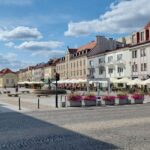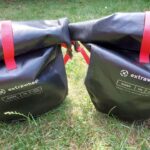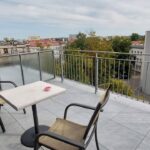Secret Uranium Mine in Kowary

The uranium mine at Kowary was important for the producion of the first Russian atomic bombs. In the years between 1945 and 1947 this was the most important uranium mine of the Soviet Union. Obviously the mining activities were top secret at that time. More than 20 tunnels were dug during the times of the polish-soviet R1 Plant.
Although the urianium mining was top secret for many decades, the mine became a little more public after a radon therapy tunnel was opened. Named Sztolnie Kowary (Kowarian Tunnel) it was the core of the Cieplice Health Resort. It was one of only three radon therapy centres in Europe at this time.
Radon is a natural gas, belonging to the Edelgas, and it generally does not react very easy. Natural radon has a very low radioactivity and is thus not really healthy. As it is not incorporated there are no dangers of contamination, but on the other hand the radioactivity is the only scientifically accepted effect on the body. Obviously the healing effects of radon are very dubious. However, postulated dangers of radon are exaggerated and there is definitely no danger to visitors or patients.
A real danger exists nearby. The mined ore was milled and leached in an uranium mill to extract the uranium. The tailings were pumped as sludges into a sedimentation pond, where they are until today. The seepage water is a continuous hazard to ground and surface waters.
The mine itself is today converted into a tourist attraction. The long tour through one of the adits is a sort of multimedia museum with diaramas of the local mining history. Since 700 years iron ore was mined in the area. At this time the uranium was not know and not used.








